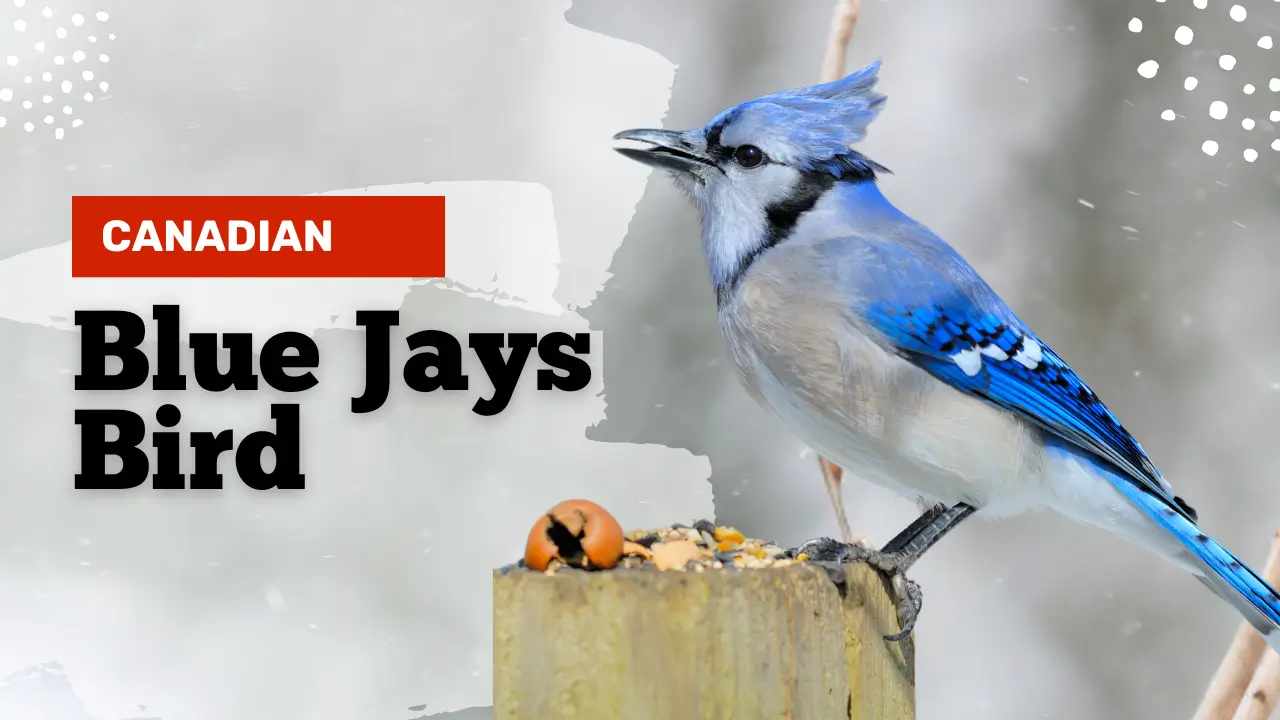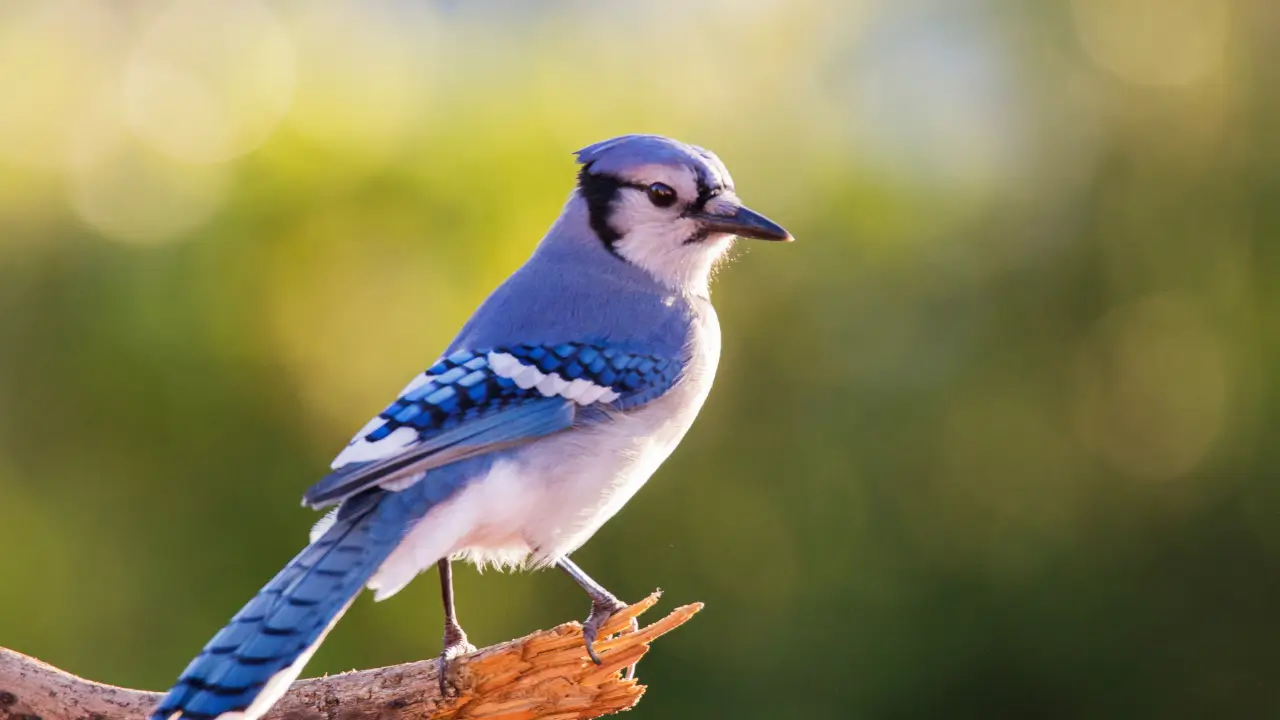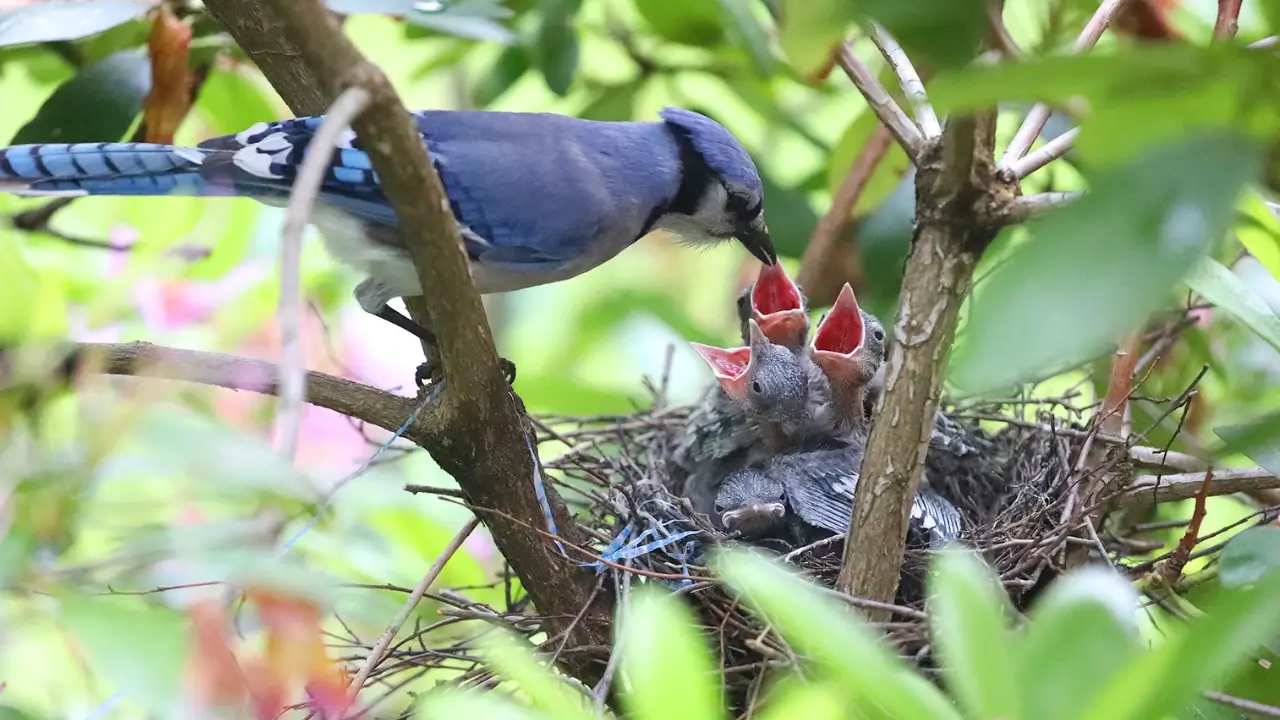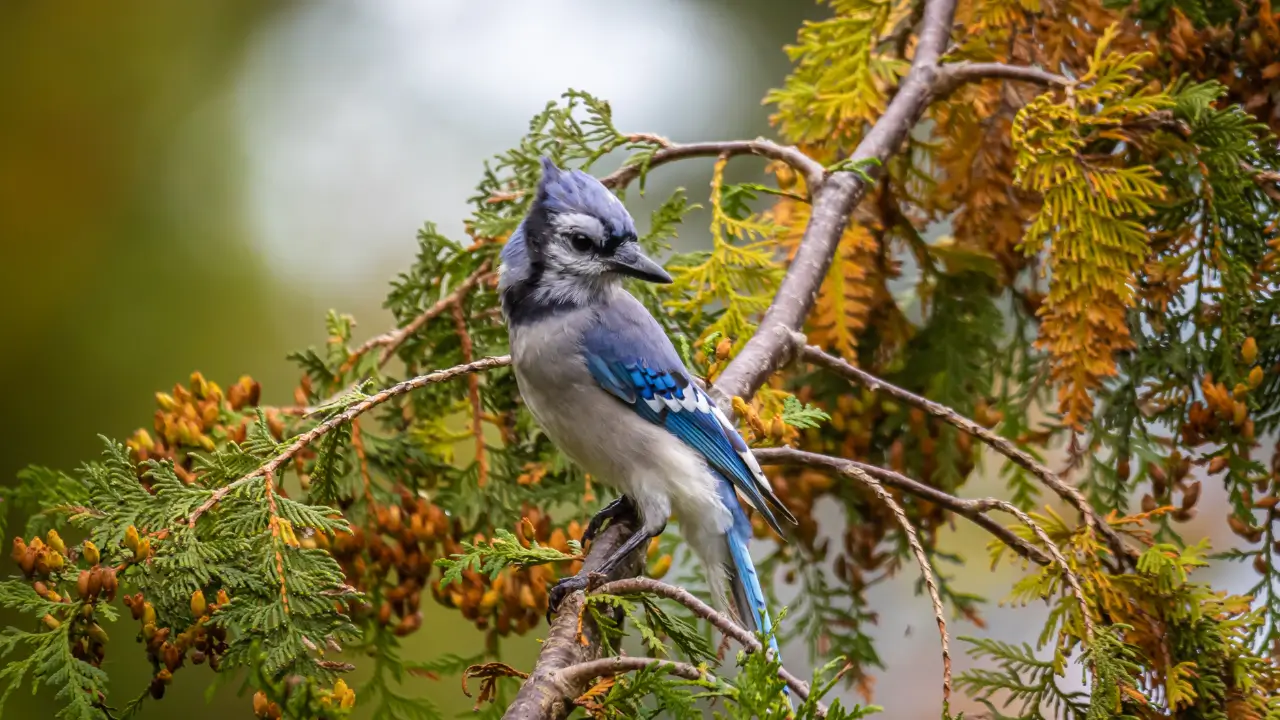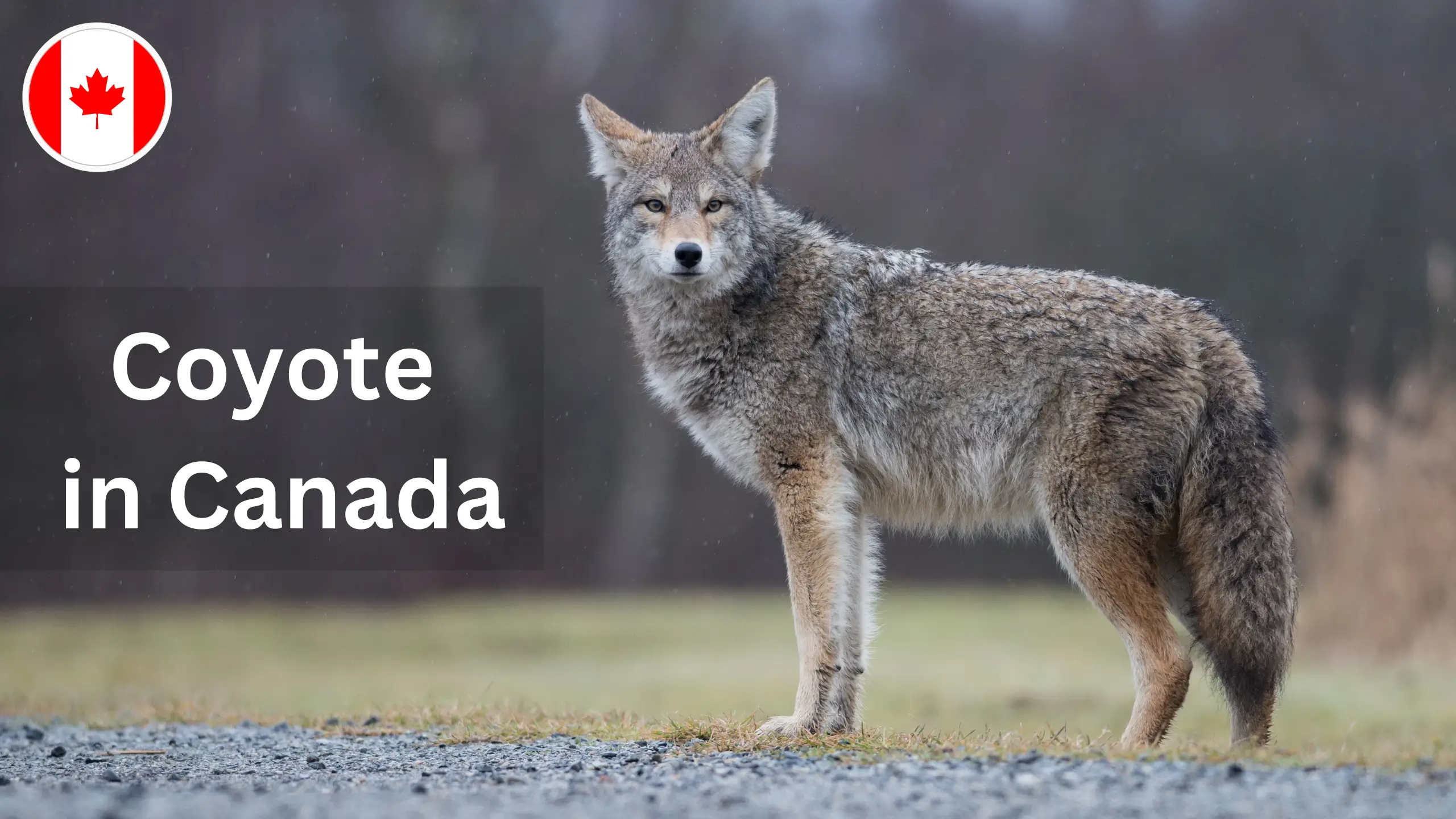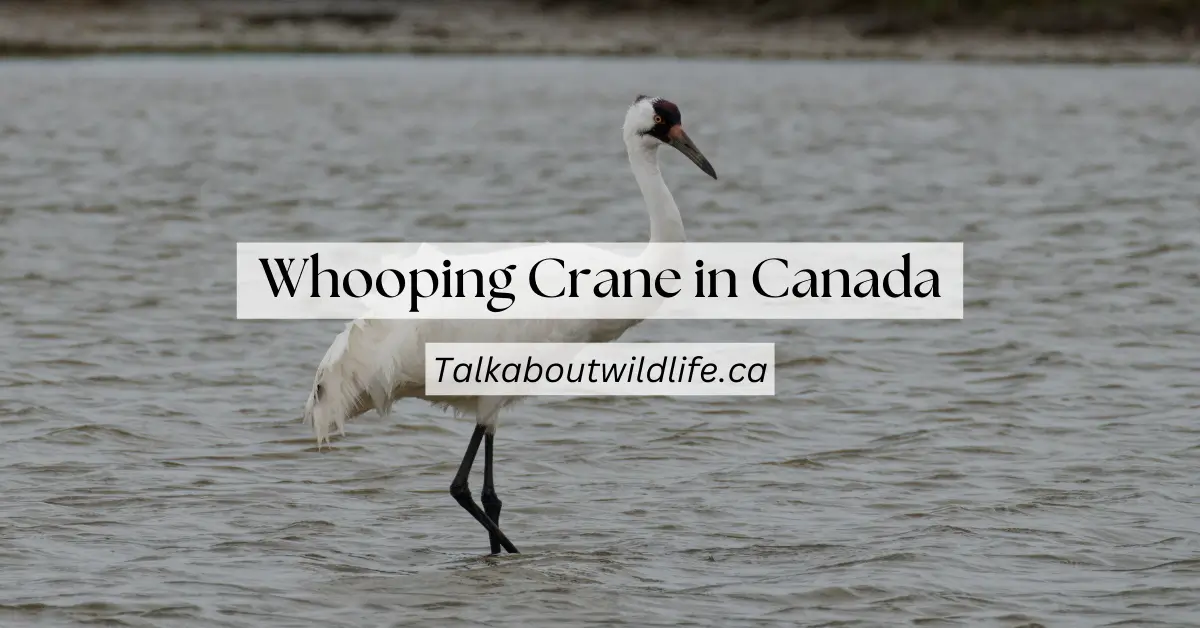Blue Jays have bright blue feathers and make loud noises. They can be found in woods, parks, and yards. Blue Jays are smart and can copy sounds other birds make. They like to eat nuts, seeds, and bugs. It’s fun to watch a Blue Jay eat from a bird feeder.
These birds frequently roam in Canadian territories and exhibit the face of Canadian wildlife beauty.
Physical Characteristics and Features
Following are some of the major physical characteristics of these birds that make them attractive for the tourists;
| Features | Relevant Information |
| Scientific Name | Cyanocitta cristata |
| Life Span | Average is about 7 to 17 years but can go up to 26 years. |
| Diet | Various insects, spiders, berries, fungi species, small Roaches, birds’ eggs, and carrion. |
| Wingspan | The average is about 13 to 17 inches |
| Average Weight | About 70 to 100 grams on average |
| Role in Ecosystem | Seed distribution, growth of many plant species, and helping in increasing plant diversity. |
| Habitat | Deciduous forests, Coniferous forests, Mixed forests, and Urban Wooded Areas |
| Status of specie | Not Endangered |
Some Interesting Facts About the Blue Jays Bird in Canada
These birds are found in diverse Canadian territories ranging from one side to the other and capture the interest of multiple visitors. Here are some of the unique facts about these blue jays birds in Canada;
1. Optical Illusion
Blue jays aren’t truly blue. Their brown melanin feathers appear blue due to light scattering because of a phenomenon called structural coloration.
2. Canadian Resilience
Many blue jays stay in Canada year-round, adapted to cold climates, and visible even in snowy conditions.
3. Vocal Tricksters
Blue jays mimic hawk calls to scare away competitors or warn of actual predators.
4. Forest Regenerators
Blue jays aid forest growth by burying acorns for winter, with forgotten caches potentially growing into new oaks.
5. Diverse Eaters
Omnivorous blue jays eat seeds, nuts, insects, fruits, and occasionally small vertebrates or other birds’ eggs.
6. Brave Defenders
These birds aggressively protect their nests, chasing away larger predators including hawks and humans.
7. Complex Communication
They use varied vocalizations and body language for warnings, mating signals, and territorial claims.
8. Urban Survivors
Blue jays strive in human-altered environments, common in city parks and suburban backyards across Canada.
9. Iconic Appearance
They are easily identified by bright blue plumage, black necklace, and expressive crest used for communication.
10. Provincial Icon
The blue jay is Prince Edward Island’s official provincial bird, adopted in 1977 as a natural symbol.
11. Seasonal Shades
Their blue feathers appear brighter or duller seasonally due to wear and structural color changes.
12. Skilled Architects
Blue jays make strong nests using sticks, grass, and mud. They often add things like paper or string too.
Sightseeing of Blue Jays Bird
These beautiful and captivative birds fly with their eye-catching features in the diverse regions of Canada. Following are some good places for the sightseeing of Blue Jays Birds:
| Direction of the Country | Places Where Blue Jay Birds are Found |
| Western Region | British Columbia and Alberta |
| Eastern Region | Nova Scotia, New Brunswick, and Quebec |
| Central Region | Ontario, Manitoba, and Saskatchewan |
Best Season and Month to See Blue Jay Bird
Below mentioned seasons and months are ideal for planning a trip to see Blue Jay Bird:
| Season | Months for Sightseeing |
| Spring | March to May |
| Summer | June to August |
| Fall | September to November |

